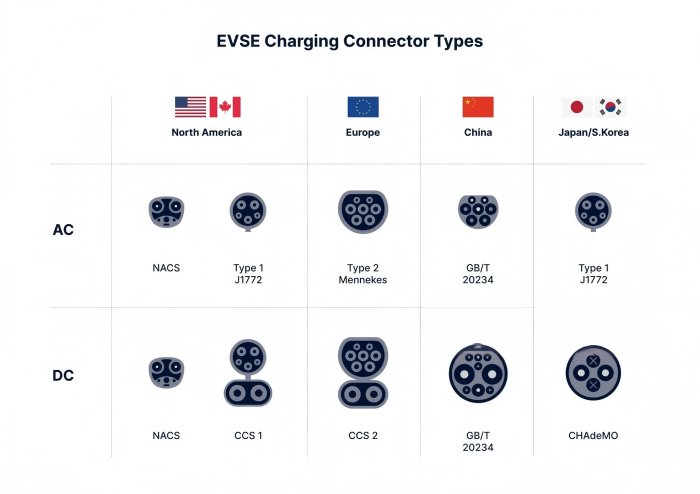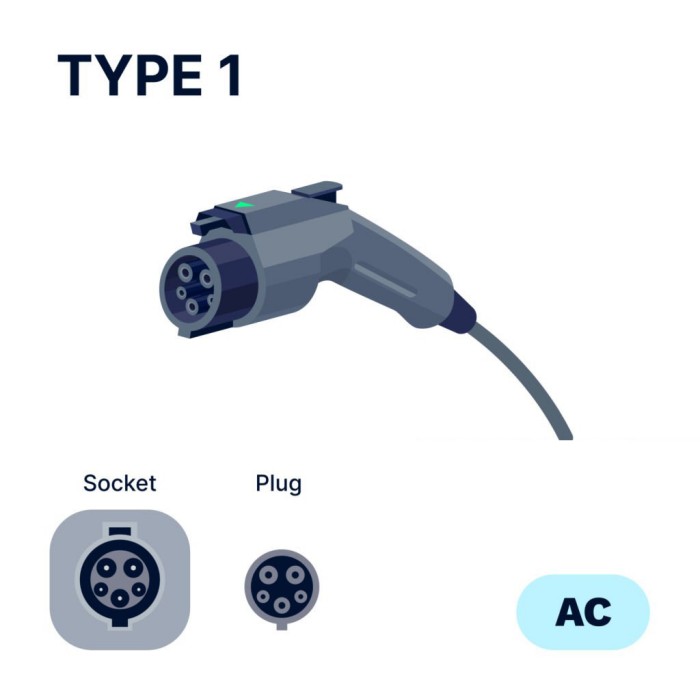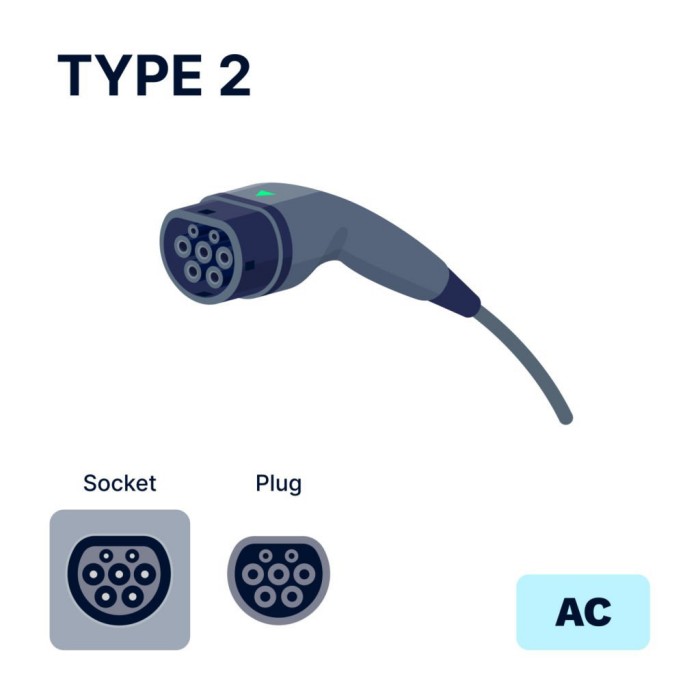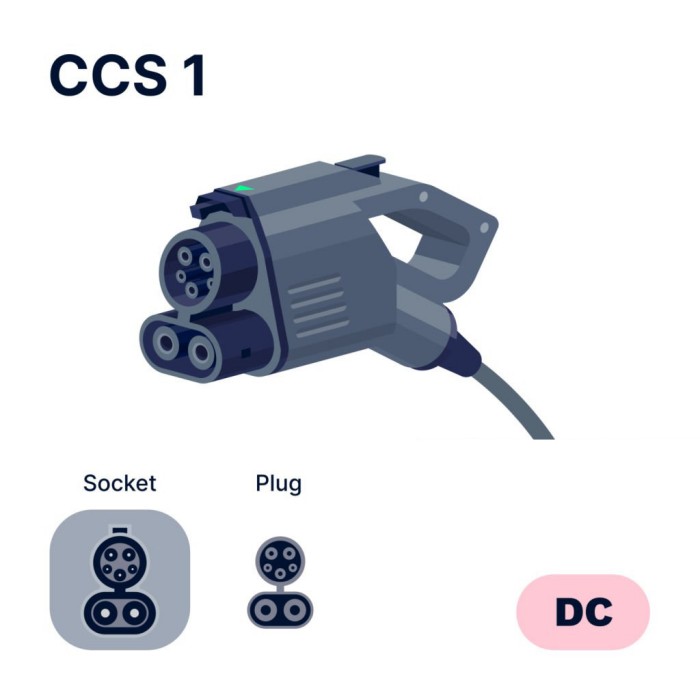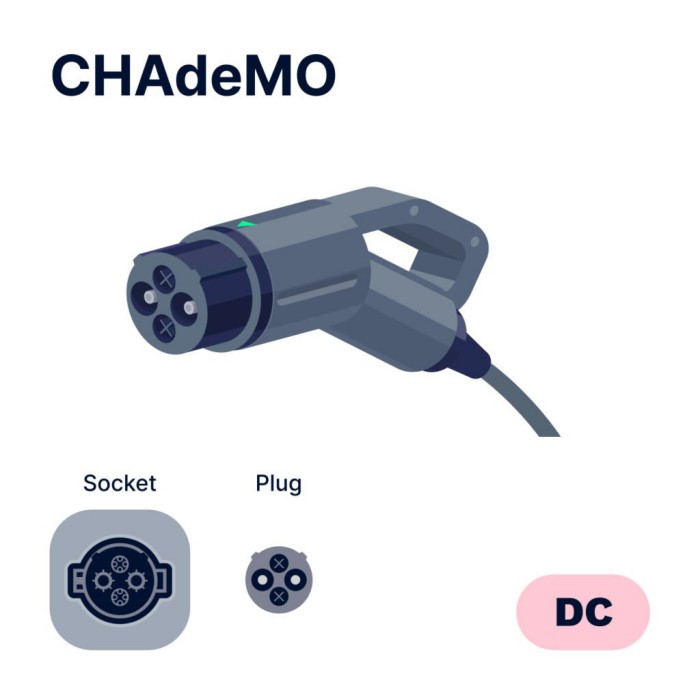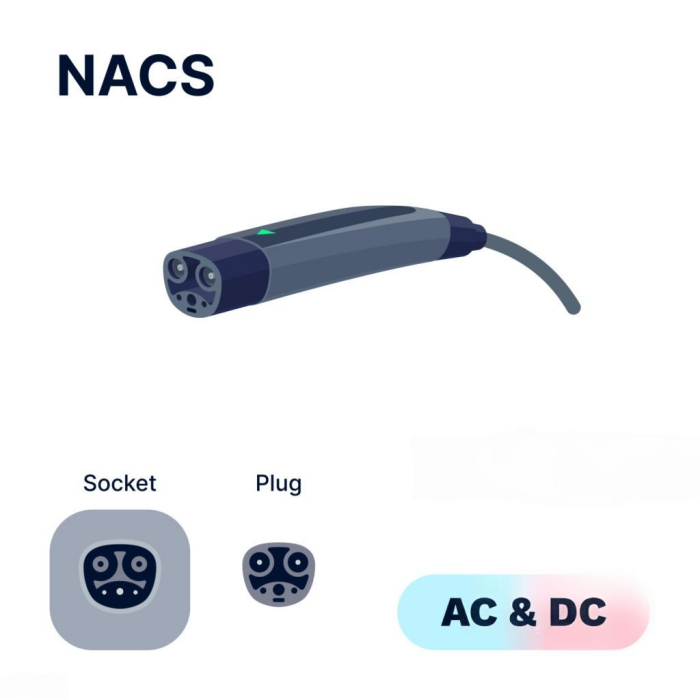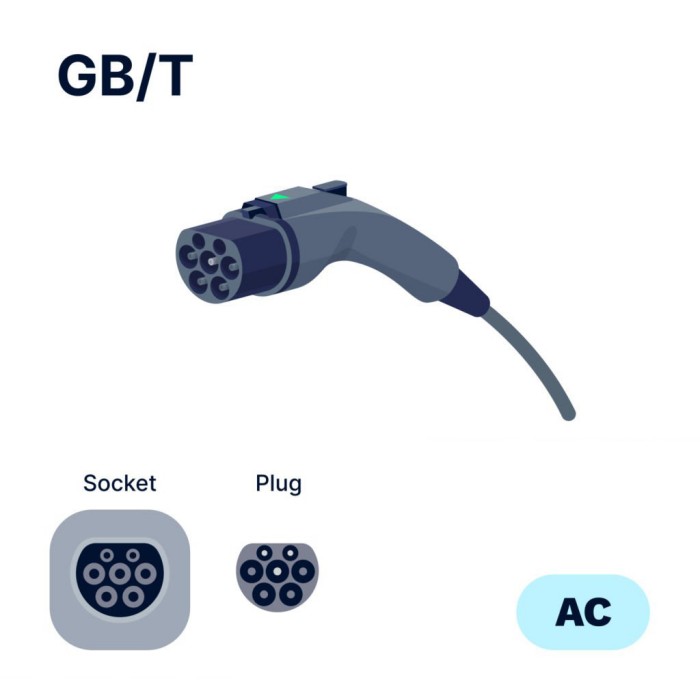As electric vehicles (EVs) continue to gain traction across the world, understanding how to charge them becomes just as important as driving them. One key piece of the puzzle? The charging connector. Whether you’re buying your first EV or installing a charging station, knowing the different EV connector types is essential.
This guide breaks down the major types of EV charging connectors used worldwide, how they differ, where they’re used, and what the future holds.
1. Introduction to EV Charging Infrastructure
The success of EVs isn’t just about the vehicles themselves — it’s about the ecosystem around them. Charging infrastructure is one of the most critical components, and at the heart of this system are the connectors that deliver the power.
-
Why connectors matter: Not all EVs and charging stations use the same plugs.
-
Regional differences: Europe, North America, Asia, and China all have different standards.
-
Compatibility: The wrong connector can make a charging station useless for your vehicle.
2. AC vs. DC Charging: What’s the Difference?
Electric vehicles can charge using AC (Alternating Current) or DC (Direct Current) electricity. Here’s how they differ:
| Feature | AC Charging | DC Fast Charging |
|---|---|---|
| Power Source | Standard electricity from grid | Converted AC to DC power |
| Conversion Location | Inside the car (onboard charger) | Inside the charging station |
| Charging Speed | Slower (up to 22 kW) | Faster (up to 350 kW and beyond) |
| Use Case | Home charging, overnight charging | Highway stops, commercial stations |
3. SAE J1772 (Type 1) – North America’s Standard
The SAE J1772, also known as Type 1, is the most common plug in North America for Level 1 and Level 2 AC charging.
Key Features:
-
5-pin design
-
Delivers up to 19.2 kW at 240V
-
No automatic lock
-
Compatible with nearly all EVs in the U.S. and Japan (excluding Tesla, which requires an adapter)
4. Mennekes (Type 2) – Europe’s Go-To Plug
Type 2, or the Mennekes connector, is the standard plug across Europe for AC charging.
Key Features:
-
7-pin configuration
-
Supports both single and three-phase electricity
-
Delivers up to 43 kW (AC fast charging)
-
Includes an automatic locking mechanism for safety
This connector is mandatory across Europe for all public AC charging stations.
5. Combined Charging System (CCS) – The Universal Fast Charger
The CCS (Combined Charging System) is like the Swiss Army knife of EV charging – it combines AC and DC capabilities in one plug.
| Version | Base Type | Region Used | Power (DC) | Notes |
|---|---|---|---|---|
| CCS1 | Type 1 | North America | Up to 350 kW | Used by Ford, GM, VW, more |
| CCS2 | Type 2 | Europe | Up to 350 kW | Standard in EU & UK |
The top part of the plug handles AC charging, while the bottom two larger pins handle DC fast charging.
6. CHAdeMO – Japan’s DC Fast Charging Standard
CHAdeMO stands for CHArge de MOve, and it’s Japan’s answer to fast charging.
Features:
-
Purely DC charging (not combined with AC)
-
Up to 100 kW (with future upgrades planned)
-
Widely used by Nissan Leaf, Mitsubishi Outlander
-
Still common in Japan, but slowly being replaced in other regions
Though declining in global popularity, CHAdeMO is known for its vehicle-to-grid (V2G) capabilities.
7. Tesla’s North American Charging Standard (NACS)
Tesla’s proprietary plug, now rebranded as NACS, combines elegance and efficiency.
Highlights:
-
Slim, compact design
-
Delivers up to 250 kW on Tesla Superchargers
-
Supports both AC and DC through a single connector
-
Now being adopted by Ford, GM, Rivian, and others in the U.S.
Tesla Compatibility Table:
| Region | Plug Used | Requires Adapter? |
|---|---|---|
| North America | Tesla/NACS | Yes (for non-Teslas) |
| Europe | Type 2 (Tesla EU) | No |
| China | GB/T with adapter | Yes |
8. GB/T – China’s National Standard
China uses its own standard called GB/T, which comes in separate versions for AC and DC.
GB/T Characteristics:
-
AC connector: looks similar to Type 2, but is not compatible
-
DC connector: unique design with very high power ratings (up to 237.5 kW)
-
Government-mandated for all Chinese-made EVs
In the future, China may adopt a version of the CCS-CHAdeMO joint standard.
9. Global Connector Comparison Table
| Connector Type | Region | Charging Type | Max Power | Use Case |
|---|---|---|---|---|
| Type 1 (J1772) | North America | AC (Level 1/2) | 19.2 kW | Residential / Public AC |
| Type 2 (Mennekes) | Europe | AC (1/3-phase) | 43 kW | Standard in EU |
| CCS1 | North America | DC Fast | 350 kW | High-speed highway charging |
| CCS2 | Europe | DC Fast | 350 kW | Public DC fast charging |
| CHAdeMO | Japan, Global | DC Fast | 100 kW+ | Older fast charge standard |
| Tesla NACS | North America | AC/DC | 250 kW | Tesla-exclusive (for now) |
| GB/T | China | AC/DC (separate) | 237.5 kW | National Chinese standard |
10. Factors That Affect Charging Speed
Even with the right plug, your charging speed can vary depending on:
-
Your vehicle’s max charge rate
-
Battery size and state of charge
-
Temperature conditions
-
Charger power output
-
Connector compatibility
Always check your EV’s specifications to match the optimal charger.
11. Built-in Safety Features
All EV charging connectors come with strict safety features:
-
Ground fault protection
-
Automatic shut-off
-
Temperature sensors
-
Locking mechanisms to prevent disconnection during charging
These standards protect both your vehicle and you during every charging session.
12. Future Trends in EV Charging Connectors
The industry is rapidly evolving:
-
NACS is becoming the new standard in North America
-
CCS2 remains dominant in Europe
-
Wireless charging is on the horizon
-
V2G (Vehicle-to-Grid) tech will soon allow cars to power homes or feed energy back to the grid
13. Conclusion: Which Connector Should You Use?
Choosing the right EV connector depends on:
-
Where you live
-
What vehicle you drive
-
How fast you need to charge
For North America: Look for CCS1 or NACS
For Europe: Use CCS2 or Type 2
For China: You’ll need a GB/T-compatible system
For Japan: CHAdeMO is still relevant
As EV adoption continues to grow, connector technology is evolving to offer faster, safer, and more universal solutions.
FAQs
Q1: What is the fastest EV charging connector?
A: Currently, CCS and Tesla NACS support up to 350 kW for ultra-fast charging.
Q2: Can I use a CCS charger for a Tesla?
A: Yes, with a proper CCS adapter for Tesla models in some regions.
Q3: Is CHAdeMO still used?
A: Yes, especially in Japan and on some older vehicles like the Nissan Leaf, but it’s declining globally.
Q4: What’s the main difference between AC and DC charging?
A: AC is slower and charges through the vehicle’s onboard charger, while DC is much faster and sends power directly to the battery.
Q5: Which EV connector is the most widely used?
A: CCS (Combined Charging System) is currently the most widely adopted connector globally.
Post time: Apr-07-2025

